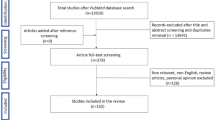Abstract
Trichophyton rubrum is a common human dermatophyte that is the causative agent of 80–93% of fungal infections of the skin and nails. While dermatophyte infections in healthy people are easily treatable with over-the-counter medications, such infections pose a higher risk for patients with compromised immune function and impaired regenerative potential. The efficacy of boric acid (BA) for the treatment of vaginal yeast infections prompted an investigation of the effect of BA on growth and morphology of T. rubrum. This is of particular interest since BA facilitates wound healing, raising the possibility that treating athlete’s foot with BA, either alone or in combination with other antifungal drugs, would combine the benefits of antimicrobial activity and tissue regeneration to accelerate healing of infected skin. The data presented here show that BA represses T. rubrum growth at a concentration reported to be beneficial for host tissue regeneration. Oxygen exposure increases BA toxicity, and mycelia growing under BA stress avoid colonizing the surface of the growth surface, which leads to a suppression of aerial mycelium growth and surface conidia formation. BA penetrates into solid agar matrices, but the relative lack of oxygen below the substrate surface limits the effectiveness of BA in suppressing growth of embedded T. rubrum cells.



Similar content being viewed by others
References
Ilkit M, Durdu M (2015) Tinea pedis: the etiology and global epidemiology of a common fungal infection. Crit Rev Microbiol 41:374–388. doi:10.3109/1040841X.2013.856853
Hryncewicz-Gwozdz A, Kalinowska K, Plomer-Niezgoda E, Bielecki J, Jagielski T (2013) Increase in resistance to fluconazole and itraconazole in Trichophyton rubrum clinical isolates by sequential passages in vitro under drug pressure. Mycopathologia 176:49–55. doi:10.1007/s11046-013-9655-y
Fraga-Silva TF, Marchetti CM, Mimura LA, Locachevic GA, Golim MA, Venturini J, Arruda MS (2015) Relationship among short and long term of hypoinsulinemia-hyperglycemia, dermatophytosis, and immunobiology of mononuclear phagocytes. Mediat Inflamm 2015:342345. doi:10.1155/2015/342345
Iavazzo C, Gkegkes ID, Zarkada IM, Falagas ME (2011) Boric acid for recurrent vulvovaginal candidiasis: the clinical evidence. J Women’s Health (Larchmt) 20:1245–1255. doi:10.1089/jwh.2010.2708
Loock JW (2012) A randomised controlled trial of active chronic otitis media comparing courses of eardrops versus one-off topical treatments suitable for primary, secondary and tertiary healthcare settings. Clin Otolaryngol 37:261–270. doi:10.1111/j.1749-4486.2012.02532.x
Worboys M (2013) Joseph Lister and the performance of antiseptic surgery. Notes Rec R Soc Lond 67:199–209. doi:10.1098/rsnr.2013.0028
De Seta F, Schmidt M, Vu B, Essmann M, Larsen B (2009) Antifungal mechanisms supporting boric acid therapy of Candida vaginitis. J Antimicrob Chemother 63:325–336. doi:10.1093/jac/dkn486
Brittingham A, Wilson WA (2014) The antimicrobial effect of boric acid on Trichomonas vaginalis. Sex Transm Dis 41:718–722. doi:10.1097/OLQ.0000000000000203
Ali SE, Thoen E, Evensen O, Skaar I (2014) Boric acid inhibits germination and colonization of Saprolegnia spores in vitro and in vivo. PLoS One 9:e91878. doi:10.1371/journal.pone.0091878
Benderdour M, Hess K, Dzondo-Gadet M, Nabet P, Belleville F, Dousset B (1998) Boron modulates extracellular matrix and TNF alpha synthesis in human fibroblasts. Biochem Biophys Res Commun 246:746–751
Benderdour M, Van Bui T, Hess K, Dicko A, Belleville F, Dousset B (2000) Effects of boron derivatives on extracellular matrix formation. J Trace Elem Med Biol 14:168–173. doi:10.1016/S0946-672X(00)80006-1
Nzietchueng RM, Dousset B, Franck P, Benderdour M, Nabet P, Hess K (2002) Mechanisms implicated in the effects of boron on wound healing. J Trace Elem Med Biol 16:239–244
Clinical and Laboratory Standards Institute (2008) Reference method for broth dilution antifungal susceptibility testing of filamentous fungi. Clinical Laboratory Standards Institute, Wayne
Romsaithong S, Tomanakan K, Tangsawad W, Thanaviratananich S (2016) Effectiveness of 3 per cent boric acid in 70 per cent alcohol versus 1 per cent clotrimazole solution in otomycosis patients: a randomised, controlled trial. J Laryngol Otol 1–5
Avino-Martinez JA, Espana-Gregori E, Peris-Martinez CP, Blanes M (2008) Successful boric acid treatment of Aspergillus niger infection in an exenterated orbit. Ophthal Plast Reconstr Surg 24:79–81. doi:10.1097/IOP.0b013e3181610443
Ghannoum M, Isham N, Catalano V (2014) A second look at efficacy criteria for onychomycosis: clinical and mycological cure. Br J Dermatol 170:182–187. doi:10.1111/bjd.12594
Ghannoum M, Isham N (2014) Fungal nail infections (onychomycosis): a never-ending story? PLoS Pathog 10:e1004105. doi:10.1371/journal.ppat.1004105
Oz Y, Qoraan I, Oz A, Balta I (2017) Prevalence and epidemiology of tinea pedis and toenail onychomycosis and antifungal susceptibility of the causative agents in patients with type 2 diabetes in Turkey. Int J Dermatol 56:68–74. doi:10.1111/ijd.13402
Murray FJ (1995) A human health risk assessment of boron (boric acid and borax) in drinking water. Regul Toxicol Pharmacol 22:221–230
Moore JA (1997) An assessment of boric acid and borax using the IEHR evaluative process for assessing human developmental and reproductive toxicity of agents. Expert Scientific Committee. Reprod Toxicol 11:123–160
Reid RJ, Hayes JE, Post A, Stangoulis JCR, Graham RD (2004) A critical analysis of the causes of boron toxicity in plants 27:1405–1414
de Abreu Neto JB, Hurtado-Perez MC, Wimmer MA, Frei M (2016) Genetic factors underlying boron toxicity tolerance in rice: genome-wide association study and transcriptomic analysis. J Exp Bot
Acknowledgements
M. Boyer provided technical and editorial support.
Author information
Authors and Affiliations
Corresponding author
Ethics declarations
This work was supported by the Iowa Osteopathic Educational Research Foundation (IOER).
Conflict of Interest
The author declares that he has no conflict of interest.
Rights and permissions
About this article
Cite this article
Schmidt, M. Boric Acid Inhibition of Trichophyton rubrum Growth and Conidia Formation. Biol Trace Elem Res 180, 349–354 (2017). https://doi.org/10.1007/s12011-017-1019-x
Received:
Accepted:
Published:
Issue Date:
DOI: https://doi.org/10.1007/s12011-017-1019-x




